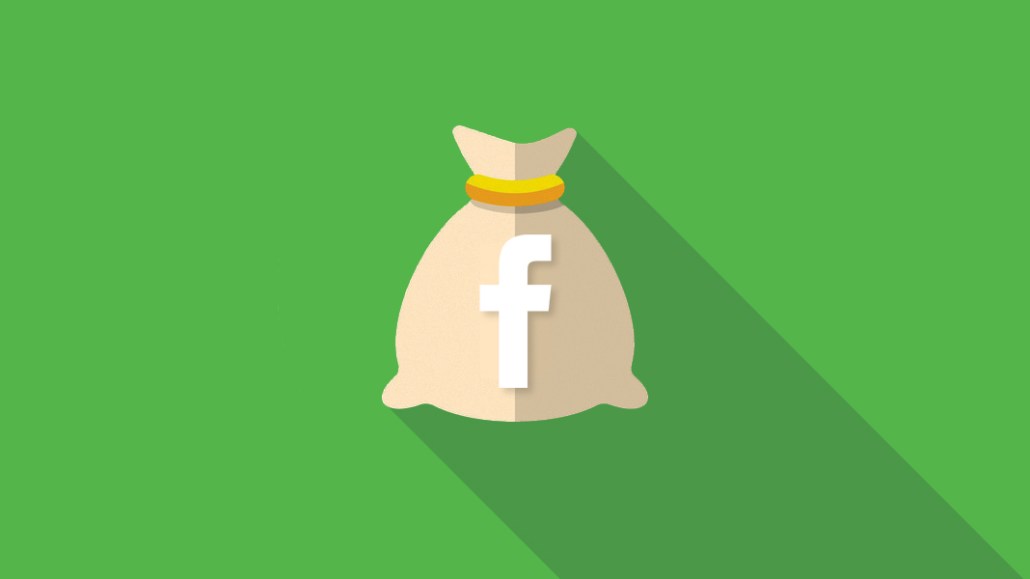Save 50% on a 3-month Digiday+ membership. Ends Dec 5.
‘It’s going to be a slow burn’: Publishers are starting to see money from Facebook’s mid-roll ads

Three months since Facebook started running ads in publishers’ videos, participants are finding there’s money to be made — as long as they have a ton of scale.
Four video publishers that are part of Facebook’s beta test for mid-roll ads said the product is bringing in some revenue, with three of them saying it’s already matched or surpassed the revenue they made from Facebook’s Suggested Videos product. (Suggested Videos was one of Facebook’s first attempts to help video owners make money on the platform by inserting ads between different recommended videos.) In other words: Nothing to write home about yet.
“It’s on par with suggested videos, but not excessively over,” said one publishing source. “I wouldn’t say Facebook has fully figured this out but I also wouldn’t say this is a bust; it’s working but it’s going to be a slow burn.”
Another publishing source provided greater detail. One of this publisher’s videos that has generated 24 million (three-second) video views on Facebook has so far brought in $11,000 in revenue. This is after Facebook’s 45 percent cut. The publisher would only need 1.5 million to 2 million video views on a YouTube video to make the same amount of money from YouTube’s pre-roll ads, the source said. It should be noted that it’s far easier to scale views on Facebook than it is on YouTube, though.
“What Facebook lacks in terms of a net CPM, they’re making it up in terms of volume,” said this publishing exec.
Other publishing execs echoed this sentiment. While the revenue from Facebook mid-rolls isn’t at blockbuster levels just yet, if you have enough scale — both in terms audience and output — then the money isn’t bad. This is also why publishers said they are primarily focused on mid-roll ads within on-demand videos, which scale better than live videos.
Facebook declined to comment for this story.
Ad position: web_incontent_pos1
That said, publishers participating in the beta program aren’t inserting ads into every single video. The four publishers in the beta are only monetizing 10 to 25 percent of their Facebook videos. Some of this has to do with Facebook’s terms for mid-roll ads, which require on-demand videos to run at least 90 seconds and live videos to be at least six minutes long to be eligible for ad breaks. However, most top Facebook video publishers built scale on the platform by producing videos that were 60 seconds or shorter. These publishers also stressed that they don’t want to overdo it with mid-roll ads, lest they turn off viewers.
“Don’t force it,” said one publishing exec. “Don’t take a 45-second video and make it 90 seconds just to get an ad in there.”
“We are still trying to build our Facebook audience so we don’t want to stick a mid-roll in every video that they might see,” said another source.
The beta has its wrinkles. Facebook is still doing all the mid-roll ad sales itself, which means the quality of the creative and placement has been all over the map, sources said. Sometimes it’s a high-end brand that is also relevant to the publisher and its audience, and other times it’s completely irrelevant.
Sometimes, half of the audience that actually makes it to the ad — which can begin appearing 20 seconds after the video starts — drops off, said one publishing source.
Ad position: web_incontent_pos2
Publishers are experimenting with content formats and other tricks to get viewers to stick around. For instance, one publisher found that including the same text or before and after the ad has helped with retention.
Facebook is hosting training sessions with mid-roll publishing partners that covers best practices, sources said. They expect to cover topics ranging from when to place the ad breaks to how to prevent drop-off.
As was the case with Suggested Videos, publishers expressed cautious optimism about the prospects for mid-rolls on Facebook. But they’re also quick to acknowledge that things might change once the product expands to more publishing partners.
“Facebook will open that up at some point,” said one publishing exec. “As it opens it up, the CPMs will go down. As big as Facebook is, the more you open the gates, the rates go down or the fill gets diluted across more inventory.”
More in Media

Digiday+ Research Subscription Index 2025: Subscription strategies from Bloomberg, The New York Times, Vox and others
Digiday’s third annual Subscription Index examines and measures publishers’ subscription strategies to identify common approaches and key tactics among Bloomberg, The New York Times, Vox and others.

From lawsuits to lobbying: How publishers are fighting AI
We may be closing out 2025, but publishers aren’t retreating from the battle of AI search — some are escalating it, and they expect the fight to stretch deep into 2026.

Media Briefing: Publishers turn to vertical video to compete with creators and grow ad revenue in 2026
Publishers add vertical video feeds to their sites to boost engagement, attract video ad spend and compete with news creators.
Ad position: web_bfu








